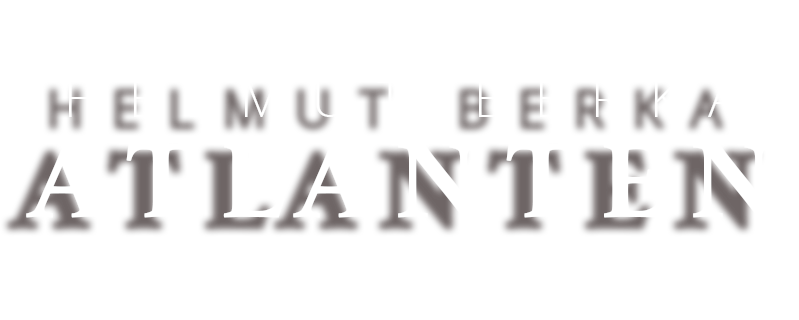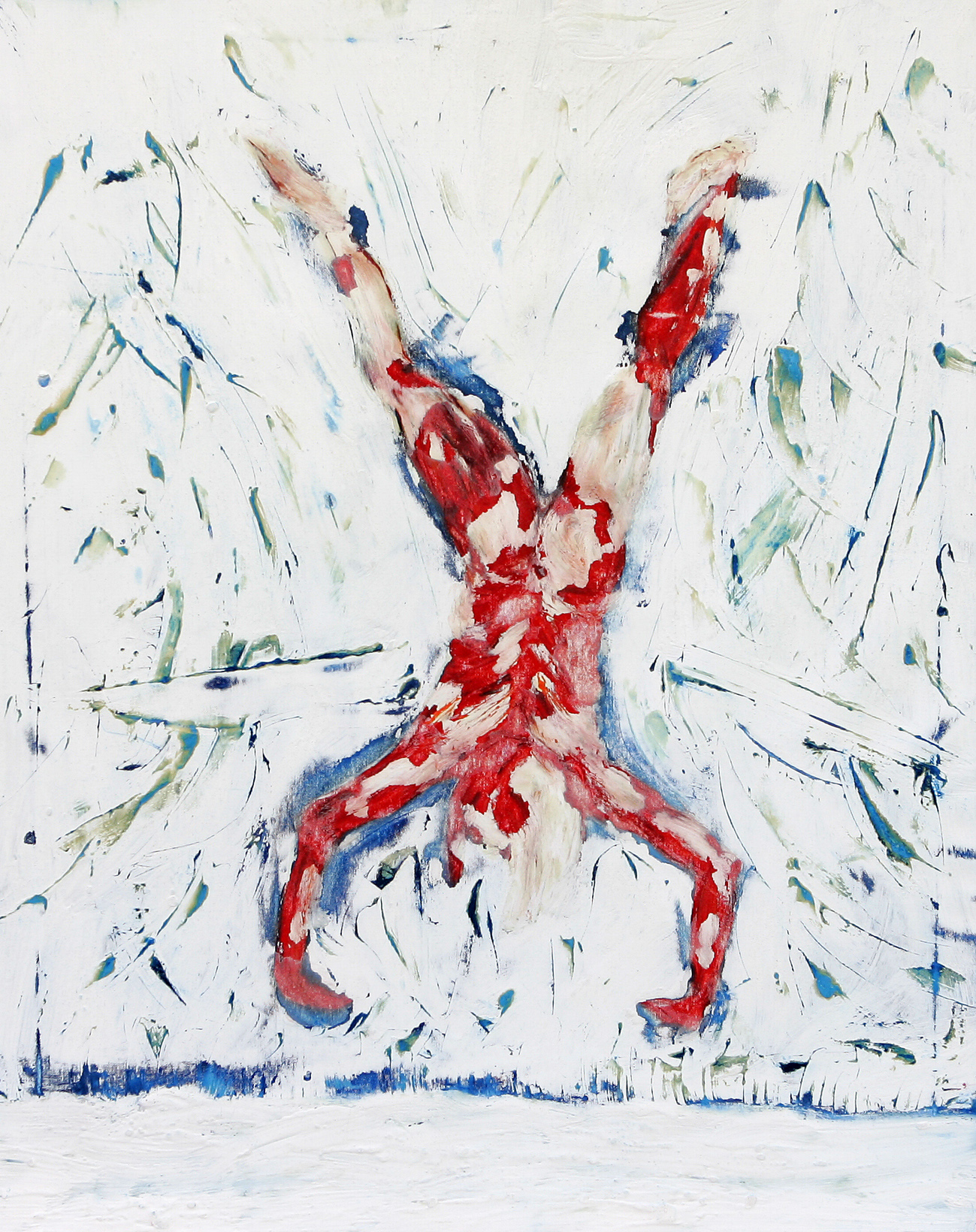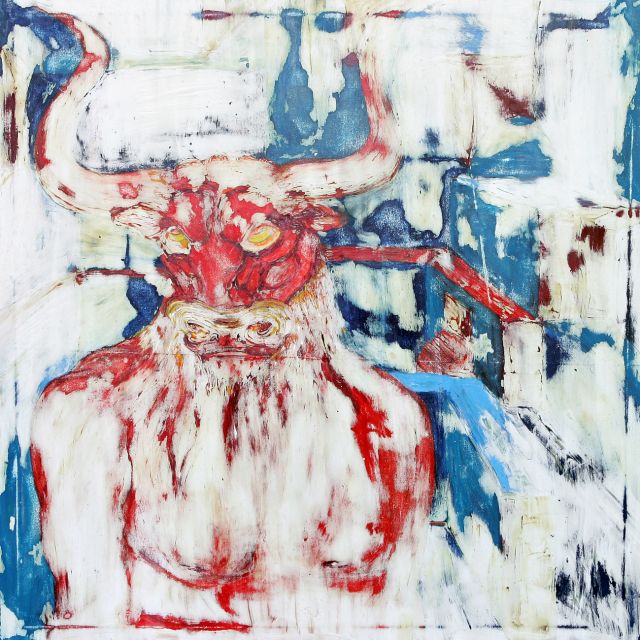

The Full Text by Anita Philipper >
Translation by Heinz-Bernd Schmidt

The person who writes about art, not being an artist or an art expert, maintains a stance to his subject that is similar to that which the re-teller of myths has to those myths: He is aware that every word used, at the very outset, is grasped "from the other side" so to speak, thus preventing him from getting up close to his subject. What is meant in this regard is not the discussion of art, which I do not consider to be problematic, insofar as we are aware that we mean the interaction of the method of expression and its associated expressive function – which in art, is that of the Sample or the Labels,1 which in language (primarily) is that of the understanding. Rather, the talk of a counterpart to the myth suggests a fundamental inadequacy in what can be "understood" from the picture in contrast to its targeted themes.
For the myth does not permit "time" and "space" as pure forms of contemplation, in the same way as it removes the idea of causation: It is, in actuality, not perceivable per se.2 Its effect is a pure perpetual manifestation in the "now"; it elucidates worldly phenomena in the sense of an individual act of volition (e.g. of the gods), which as a free act does not lend itself, nor does it even require, further explanation.
...

Helmut Berka was born in Herten in 1950. From 1974 to 1979 he studied art and German language and literature at the University/Gesamthochschule Essen. He has been working as an art teacher since 1981. His three daughters were born in 1982, 1984 and 1985.
He was a member of the "Society for monolithic thinking and research (GMDF)" from 1989 to 1995; publications and projecting group events . He was one of the founders of the Lygnaß project gallery and worked for it from 1992 to 1997.
Since 1994 he has been working with the artist An Hard ; exhibitions of both artists as An-Mut. In 1998 he was one of the founders of the project group Weisszeit whose member he still is.
Helmut Berka has been working with oil colours, acryl and different combinations of colours and materials since 1976. Exhibitions in: Herten, Bielefeld, Krefeld, Bochum, Recklinghausen, Herne, Wanne-Eickel, Hamburg, Reutlingen, Lüchow, Mansie (Oldenburg), Kultur.Gut Winkhausen (Paderborn), Schloss Lüntenbeck (Wuppertal), Ennepetal.
About the technique
The pictures were created on the basis of oil painting. At first themes and motifs are shaped with oil colours (brush and spatula) on canvas. They are "finished" at this state of the working process. Then the colours must dry for some time (for two days as a rule, although each colour needs a different drying time) before the next step of work may be started. Over these colours I distribute mushy filler with a brush and/or a spatula. The filler dries within a very short period of time (some hours). The original work is now covered by a white surface which is moulded like a relief. This is the second state of work.
Then the last and decisive working process starts.

The whole surface is worked on with the help of a grinding machine. Thus details and filigree parts are emphasized and the original motif reappears.
During this phase accidental moments are of importance because the different states of drying and dryness have influence on the dynamic way of proceeding. Dried colours or moist areas of the picture bring about crumbling or flaking results. Here it is important to react promptly, to fill in, to shape, always with regard to the context. New decisions have to be taken continually, decisions have to be questioned until the picture has reached its "final" state.
Translation by Heinz-Bernd Schmidt